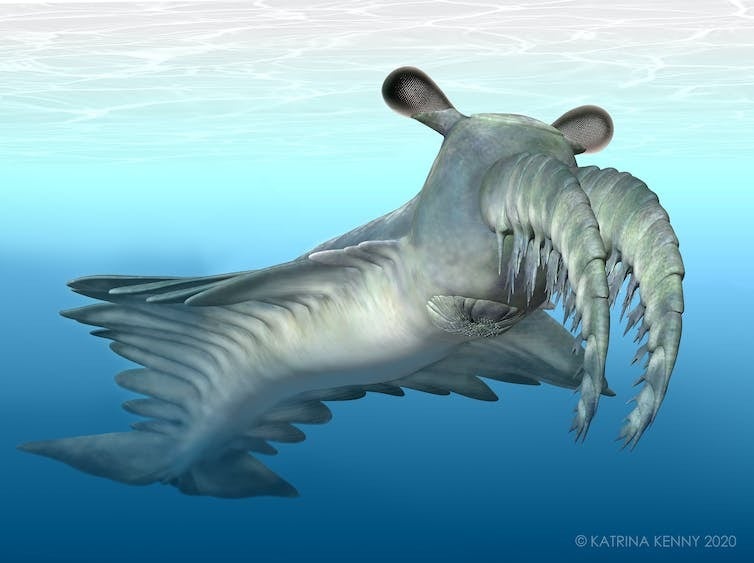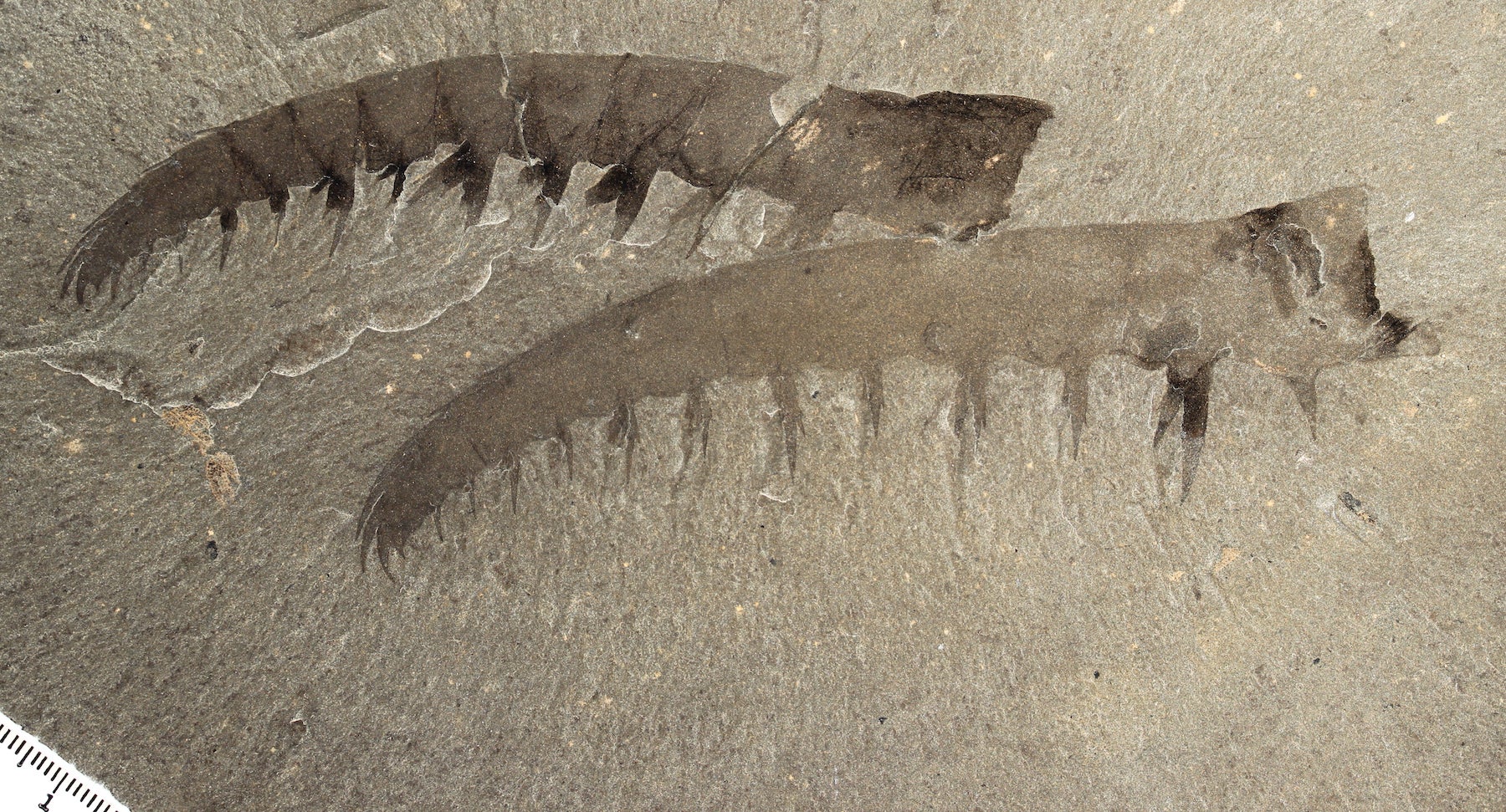Giant shrimp with bulging eyes lived half a billion years ago
The strange sea monster was one of the biggest creatures alive in the Cambrian period

Your support helps us to tell the story
From reproductive rights to climate change to Big Tech, The Independent is on the ground when the story is developing. Whether it's investigating the financials of Elon Musk's pro-Trump PAC or producing our latest documentary, 'The A Word', which shines a light on the American women fighting for reproductive rights, we know how important it is to parse out the facts from the messaging.
At such a critical moment in US history, we need reporters on the ground. Your donation allows us to keep sending journalists to speak to both sides of the story.
The Independent is trusted by Americans across the entire political spectrum. And unlike many other quality news outlets, we choose not to lock Americans out of our reporting and analysis with paywalls. We believe quality journalism should be available to everyone, paid for by those who can afford it.
Your support makes all the difference.A giant shrimp with bulging eyes that lived half a billion years ago reached up to three foot in length, according to new research.
The creepy sea beast was one of the biggest creatures of the Cambrian – a period of rapid evolution when most major animal groups first appear in the fossil record.
The bizarre sea monster, named Anomalocaris canadensis or ‘weird shrimp from Canada’, had a segmented body that ended with a tail fin.
It had formidable claws for grasping prey and a circular mouth lined with tooth-like serrations.
Each of its two eyes sat on stalks, adding to the terrifying appearance.
Anomalocaris was the Great White Shark of its time. But it lived on soft rather than crunchy prey. The apex predator’s main weapon was speed rather than strength.
It was unable to crack open the shells of primitive marine arthropods called trilobites.
It has long been thought to be responsible for some of the scarred and crushed exoskeletons palaeontologists have unearthed since its discovery in the late 1800s.
Lead author Dr Russell Bicknell, of the American Museum of Natural History, New York, said: “That didn’t sit right with me, because trilobites have a very strong exoskeleton, which they essentially make out of rock, while this animal would have mostly been soft and squishy.”
Its armour-plated, ring-shaped mouthparts laid doubt on the animal’s ability to process hard food.
Dr Bicknell and colleagues also ruled out the predator’s long claws for doing the job.

The international team built a 3D reconstruction of Anomalocaris from extraordinarily well-preserved, but flattened, fossils dug up from Canada’s Burgess Shale.
Using modern whip scorpions and whip spiders as models they were able to show the predator’s segmented appendages were able to grab prey - and could both stretch out and flex.
A technique called finite element analysis was used to show the stress and strain points on this grasping behaviour.
The appendages would have been damaged while grabbing hard prey like trilobites. Computational fluid dynamics placed the 3D model in a virtual current to predict what body position it would likely use while swimming.
The findings paint a different picture. Anomalocaris was likely a speedy swimmer, zooming after soft prey in the water column with its front appendages outstretched.
Added Dr Bicknell: “Previous conceptions were that these animals would have seen the Burgess Shale fauna as a smorgasbord, going after anything they wanted to, but we’re finding that the dynamics of the Cambrian food webs were likely much more complex than we once thought.”
Anomalocaris is described in Proceedings of the Royal Society B Biological Sciences.
Subscribe to Independent Premium to bookmark this article
Want to bookmark your favourite articles and stories to read or reference later? Start your Independent Premium subscription today.



Join our commenting forum
Join thought-provoking conversations, follow other Independent readers and see their replies
Comments